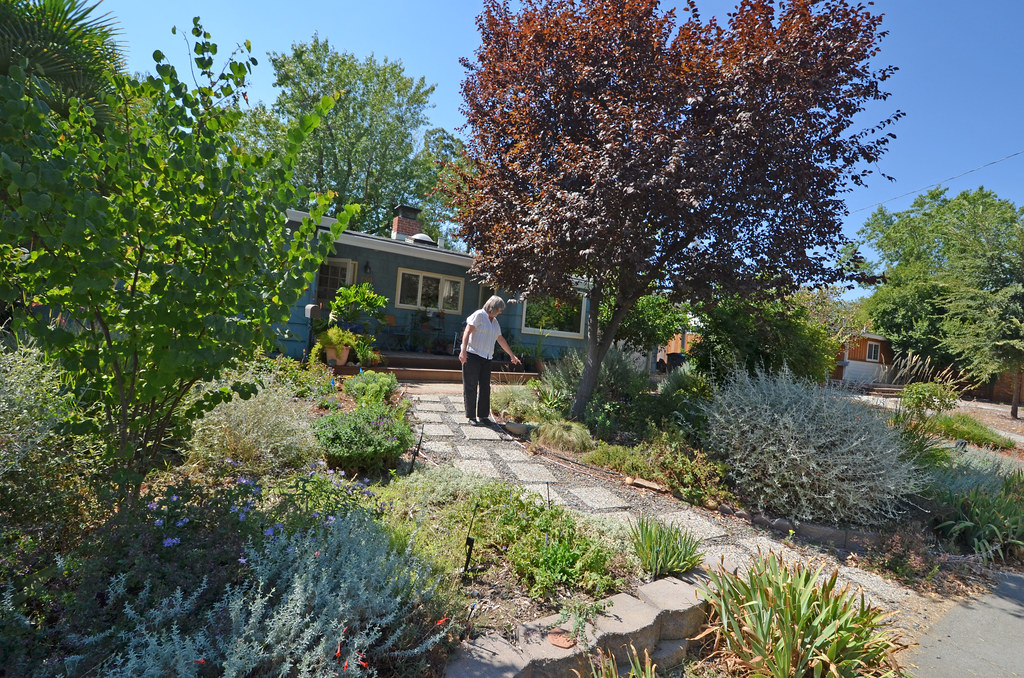
Life after lawn advice: Plant it and they will come
Ellen Zagory
Years of soil compaction, a turf-covered slope, and a complicated web of tree roots near the surface made Director of Public Horticulture Ellen Zagory’s central Davis yard difficult to irrigate.
“We couldn’t get water to stay in the soil, we’d water and it would just run into the street,” Ellen remembers. “So, we removed the turf, constructed a low retaining wall to create a more level planting area, and added a low-flow, mini-sprinkler system. Now runoff is no longer a problem.”
While most yards are mainly either full sun or full shade, the loss of a mature street tree provided Ellen a chance to have both sun-loving and shady plantings next to each other, an opportunity she takes full advantage of to attract more beneficial pollinators.
“We are blessed in this neighborhood to have mature shade trees that cool the air and provide habitat for birds and insects, but I also wanted a butterfly planting which is better in sun.”
To create this pollinator paradise, Ellen uses Frikart’s aster (Aster × frikartii ‘Mönch’), Cascade Creek California goldenrod (Solidago californica ‘Cascade Creek’) and purple oregano (Origanum ‘Hopley’s Purple’). Not only do their blooms provide summer color, they attract a mix of white, yellow and orange butterflies. Next her goal is to add more larval food plants for caterpillars like passion flower (Passiflora‘Blue Bouquet’).
“My neighbor’s plant is filling our area with beautiful orange Gulf fritillary butterflies,” Ellen explains. “And after that I need more hummingbird plants!”

